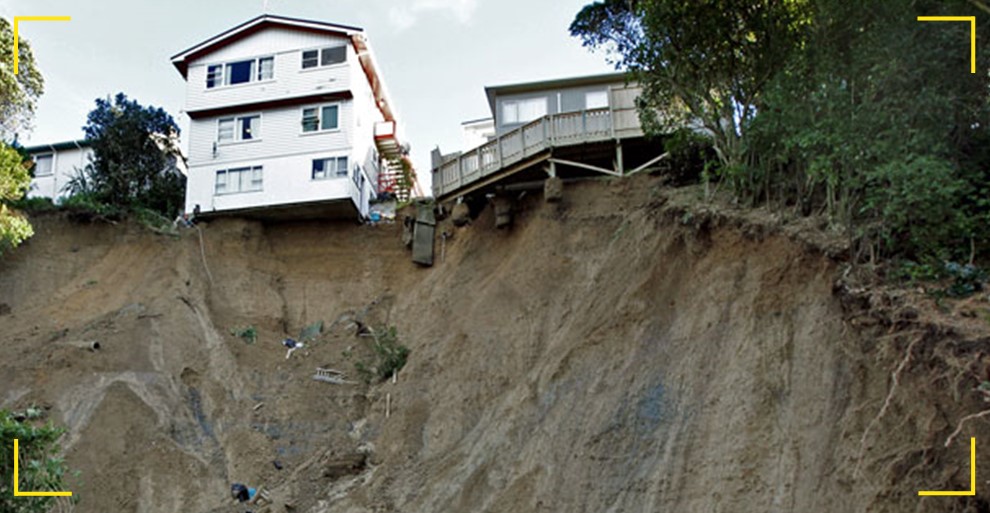
Slips put spotlight on what is covered by land insurance
Tina Mitchell is chief executive of Toka Tū Ake EQC
OPINION: Remediating land damaged by natural disasters is often complicated and extremely expensive, which is why most insurers around the world steer clear of insuring it.
New Zealanders are therefore fortunate that previous generations created a unique national insurance scheme for natural hazards, which also includes cover for land damage.
Toka Tū Ake EQC has supported New Zealanders to recover from natural hazards since 1945. Cover for land damage was added to the scheme in 1983 after the 1979 Abbotsford landslide in Dunedin, where 69 homes were lost. Landslip damage now represents the most common claim we receive each year.
Nelson, Marlborough and Northland communities have been hit especially hard by extreme weather events in recent months. The wide range of land claims we have seen highlight how unique the circumstances are for every homeowner and serve as a reminder for every homeowner to understand what they are covered for.

The Earthquake Commission Act applies equally to all Kiwi homeowners, and your entitlement is the same regardless of the type of home you have – whether you have a tiny garden, a lifestyle block or a 5km driveway to the main road.
The scheme covers the land under your home and some of the other buildings on your property (like sheds), land within 8 metres of your residence and the land supporting your driveway up to 60m from your front door. The cover also includes bridges, culverts and retaining walls (that support insured land) within 60m from your home.
This cover provides protection for the majority of New Zealand homes, but if you have a large property, live on a hill or have retaining walls or shared driveways, it pays to find out about your specific easements, land holdings, and talk to your private insurer about what you are covered for.
The private insurers and Toka Tū Ake EQC last year adopted a world-leading natural disaster response model, where private insurers stand in the shoes of Toka Tu Ake EQC and manage all aspects of a homeowner’s EQCover and private insurance claim. The purpose is to simplify the process for customers by having a single point of contact.
In terms of compensation, the legislation requires a comparison of the cost of repair and the original value of the land, with the lesser total being the amount paid. So, although it is unique in the world, homeowners need to be aware that they may not be compensated for the total costs of any repairs.
Fixing retaining walls is a crucial part of repairing your property after landslips. These are covered by Toka Tū Ake EQC if they fall within the covered area. Retaining walls are insured on their indemnity value, which like your car, reduces in value as they get older.

As such, it is vital homeowners regularly check, maintain and replace damaged their retaining walls, first of all to protect your property from a landslip, but also to protect the value of the walls in case you need to make an insurance claim.
If you are thinking of buying a property, it is prudent to think about the risk of natural hazards in the area in the same way you think about exposure to wind, traffic noise, and access to amenities. Some councils are very proactive and have created hazard mapping to show if your home may be in an area prone to landslips or other natural hazards.
As part of your due diligence, you can check if the area has seen previous landships, if the vendor or current owner has been compensated for previous damage and whether the land or retaining walls were properly repaired. It also pays to know if a retaining wall on your property boundary is shared with the neighbour or wholly owned by one address.
Once you have moved in and want to make some changes to your property, especially if you are digging into a slope, make sure you get the right experts involved and ensure any retaining walls comply with building standards.
As with other natural hazards in New Zealand, it pays to be prepared. Know your property, know your insurance cover, and prepare to reduce the impact of natural disasters.
Continue reading from STUFF HERE

.
.
.
.
.
.
.
Disclaimer: The real estate content shared on this blog is intended for general informational purposes only and industry observations. The content may reflect personal views or reference third-party sources, but it is not a substitute for tailored professional advice. Real estate decisions often involve legal, financial, and regulatory complexities, and readers should seek independent guidance from qualified specialists such as legal advisors, financial consultants, or compliance professionals before acting on any information presented here. No warranty is given as to the accuracy, completeness, or current relevance of the material.




